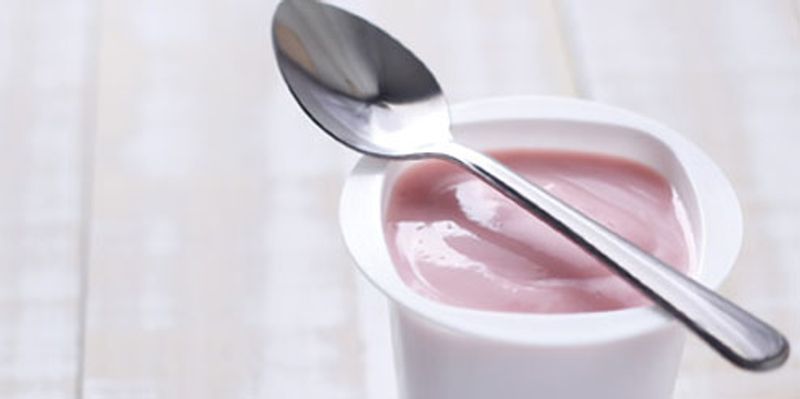Q&A: Almond, oat yogurt have more nutrient density than dairy yogurt
Key takeaways:
- Compared with dairy yogurts, plant-based yogurts had less total sugar and sodium but also less protein, calcium and potassium.
- The study showed wide variability of nutrients among plant-based products.
Plant-based yogurts — like almond and oat — showed greater nutritional density than dairy-based yogurts, a recent study found.
According to Alissa A. Nolden, PhD, an assistant professor in the department of food science at the University of Massachusetts Amherst, and colleagues, the plant-based yogurt market is expected to grow to $6.5 million by 2030.

“Plant-based yogurts have been positioned as a more sustainable alternative to dairy yogurt,” they wrote in Frontiers in Nutrition. “However, despite the appeal of the environmental benefits of a plant-based diet, this may not translate to consumer motivation to purchase specific products, like plant-based yogurt.”
Previous reports have shown that the primary appeal of yogurt consumption is to eat healthier, according to the researchers. Therefore, they conducted a study to compare the nutritional profiles of dairy vs. plant-based yogurts.
Nolden and colleagues used the Nutrient Rich Foods (NRF) Index to rank the nutrient density of 612 yogurts. According to the National Cancer Institute, nutrient-dense foods are those that are high in beneficial nutrients and low in calories.
The yogurt products evaluated during the study included:
- full-fat dairy (n=159);
- low and nonfat dairy (n=303);
- coconut (n=61);
- almond (n=44);
- cashew (n=30); and
- oat (n=15).
In general, plant-based yogurts contained significantly less total sugar and sodium and had more fiber than diary yogurts; however, plant-based yogurts also had less protein, calcium and potassium.
Almond and oat yogurt possessed the highest NRF scores, followed by low and nonfat dairy, full-fat dairy, cashew and coconut.
“Despite the growing popularity of plant-based dairy alternatives, the plant-based yogurt category contains variable nutritional compositions in comparison to dairy yogurt,” the researchers wrote.
They concluded that “with the current strategy for plant-based products to be substituted for conventional dairy products, there is a need to consider the desirable nutritional benefits of dairy yogurt, such as protein, vitamin B12, and calcium, and the minimization of nutrients such as total sugar, sodium, and saturated fat.”
Healio spoke with Nolden to learn more about the implications of the study findings.
Healio: What drove you to conduct this study?
Nolden: We work in an area of checking proteins, and we were approaching it from a consumer’s perspective where consumers are substituting these plant-based products for conventional animal products. We wanted to see whether they were considered the same.
Healio: Were you surprised to find that almond and oat yogurts scored significantly higher than all other yogurts on the NRF index?
Nolden: It’s really interesting because it was our first time using this nutrition score. What’s great about this approach is that most other research previously looked at — as we did — each individual micronutrient and macronutrient. The score allows us to look at a more comprehensive view.
One of the things that we weren’t necessarily looking to see was which one is healthier. What works about this approach is that we select nutrients that would be considered qualifying or unqualifying. Essentially, what are the benefits we’re getting out of dairy yogurt, and what are considered limitations to dairy yogurt? In that way, we select what nutrients we’re looking for or not looking for in the yogurts. We didn’t say it’s more nutritious, but it’s more nutrient dense based on the nutrients that were selected. What are the reasons consumers might find it to be a good choice?
If we had selected different nutrients based on things that we should or should not have in our diet based on nutrition guidance, we could have essentially had a different result. As I mentioned, the goal of this project was to see in terms of substitution, so to speak. There are some things in dairy yogurt that might not actually be nutritious.
Healio: What are the clinical implications for primary care physicians and patients?
Nolden: My caution for anyone would be that not all plant-based materials are the same. Within each yogurt category, there’s a lot of variability. And so, you should have an idea of what is important to limit and what is something that you’re looking for, whether it be that you are looking to more protein, and you really need to be taking a look at nutrition labels because are a lot of different properties.
Healio: Where does research go from here on the NRF index itself, or the nutrition properties?
Nolden: I think there’s a lot of different ways. It’s not really as simple as saying something’s healthier or unhealthier. It’s complex, so I like this approach. What we were hoping is that this helps the conversation about the limitations of existing plant-based products and making sure that what the industry’s producing is going to help maintain a complete diet in the future.
These results right now show that ... there are similarities across all plant-based categories. If we were to look at milk or meat or other plant-based products, it’s a similar trend. I hope that this helps to push the industry toward not just thinking plant-based products taste delicious but to also make sure that they’re delivering on key nutrient compositions that would be sound in conventional products.
References:
- Nolden A, et al. Front Nutr. 2023;doi:10.3389/fnut.2023.1195045.
- Nutrient-dense food. https://www.cancer.gov/publications/dictionaries/cancer-terms/def/nutrient-dense-food. Accessed June 6, 2023.

